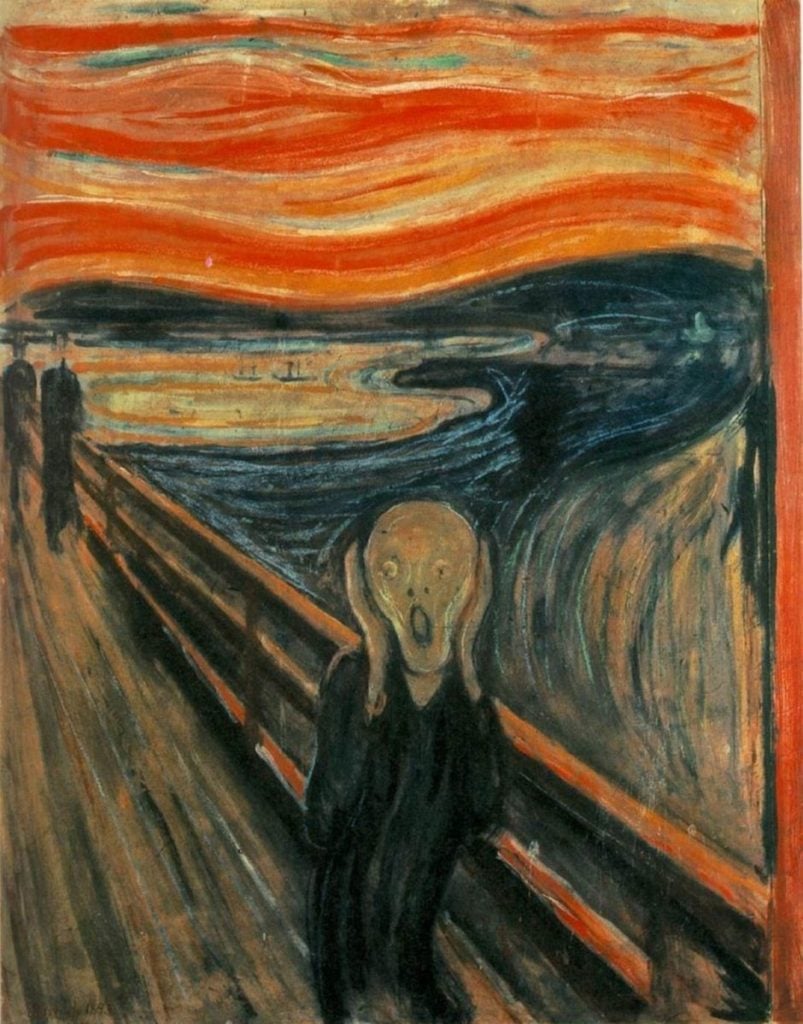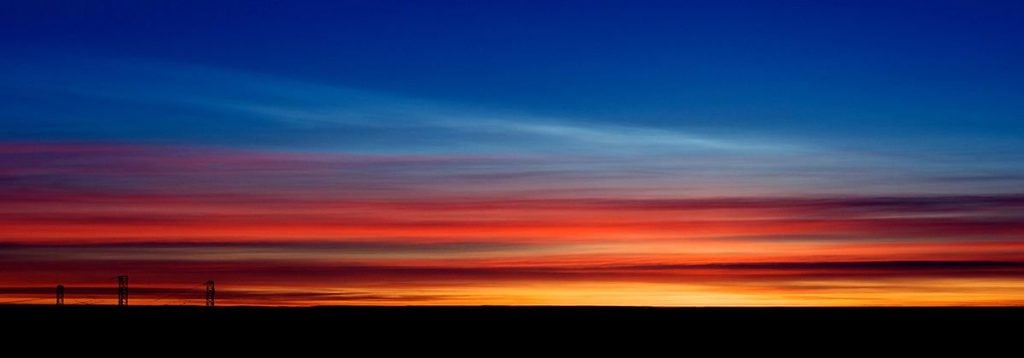Art World
Did a Freak Cloud Incident Inspire Munch’s ‘The Scream’?
Scientists in Norway have a new hypothesis about the painting's origin.

Scientists in Norway have a new hypothesis about the painting's origin.

Caroline Elbaor

Clouds may have been the inspiration behind Edvard Munch’s The Scream. A new paper by researchers in Olso postulates that a phenomenon known as “mother-of-pearl” clouds may have occurred around the time that Munch painted his iconic image in 1893, leading scientists to believe that their bright red formations were what the artist depicted.
The hypothesis, publicized in a report by Agence France Presse, comes after a 2004 theory in which American astronomers asserted that the 1883 Krakatoa volcano eruption had been the springboard for the painting. But particle pollution from an eruption would not explain the “waviness” of the sky Munch portrayed, says Helene Muri, a researcher at the University of Oslo.
In Munch’s private writings, he recounted a single experience with chilling intensity, describing a sky that suddenly turned blood red. “Munch’s scary vision was seemingly a one-time experience, the way he described it in his journal,” Muri elaborated.
Nacreous clouds—also known as “mother-of-pearl” clouds—only materialize during very cold temperatures in high altitudes in winter, and their thinness renders them visible only during the nighttime. Muri climed they are “so beautiful you could believe you are in another world.”

A formation of nacreous clouds, Photo by François Guerraz, Creative Commons Attribution-ShareAlike 3.0 Unported license.
“We do know that there were mother-of-pearl clouds in the Oslo area in the late 19th century,” she said, according to at least one scientist who recorded their presence at the time.
“Edvard Munch could well have been terrified when the sky all of a sudden turned ‘bloodish red,’” the scientists wrote. “Hence, there is a high probability that it was an event of mother-of-pearl clouds which was the background for Munch’s experience in nature, and for his iconic Scream.”
“There are other hypotheses,” Muri said. “But of course, we are natural scientists, we tend to look for answers in nature, while the psychologists have suggested it was inner torment that made Munch paint The Scream.“